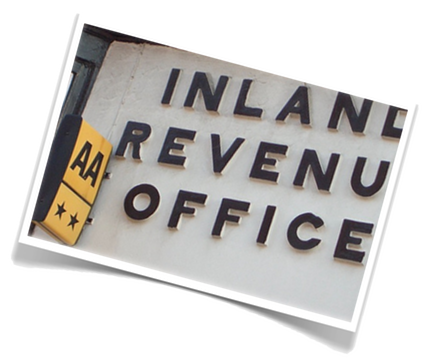Please press (at least!) one of these.
It costs you nothing, and (possibly) helps us spread the word!
Broad consequences
Thursday, 19 November 2009
I’m not sure I agree with the AA awarding the Inland Revenue two stars (although, being as fair as possible, I’ve found in my business dealings with the tax authorities that they are a lot more helpful than popular myth would have it), but read into that what you will. In the post this morning, I got a letter from HM Revenue & Customs about the reversion of the VAT rate from 15% back to 17.5%, and it got me thinking.
The reduction in the VAT rate was a government policy to simulate the economy during a particularly tough time, the idea being to encourage cash-squeezed shoppers to spend more. It would be incredible hard, given all of the other factors at play, to really analyse whether it has had this effect or not, but there are many, many other effects it has caused.
The thought that this provoked is this: to what extent do we really look at all the broadest possible consequences when we make a decision, and to what extent do we analyse the effects until we discover the one we want, and then stop our investigations?
Supply and demand
Simple economic theory suggests, with a few exceptions, that when the price of something falls, demand will increase. Therefore, if you reduce the price of something, more people will buy. The (potential) reduction in prices from the change in the main VAT rate therefore would stimulate demand.
A lot of people discussed at the time the “2.5%” reduction in prices, which goes to show the state of mathematical understanding in the country at large - the actual reduction was 2.1% - but there was a lot more to it than that...
Price points
Taking the example of two different types of retailer - what would their approaches be?
1) The round price point people
This is not only the “pound-shop” type retailers, but also some of the more premium retailers such as John Lewis (Christmas hampers, for example, here).
If we take one example from the link above, “The Christmas Feast” hamper, retailing at £100 exactly, with VAT at 15%. Next year, if John Lewis passed on VAT effects in full, the cost would be £102.17.
The same effect could be seen in those retailers who sell everything at £1, but the reality is (and I’d bet on this) that they won’t become “£1.02 Shops” from January 1st.
2) The 99p people
Becoming less popular these days, but still in existence, are the retailers who prefer £1.99, £2.99 and so on. They have the same “policy issue” as the round price point guys, because £1.99 would become £2.03, which (some believe) is a much less attractive retail price.
--
The potential effects of this are one of two things. Either the retailer doesn’t adjust prices and takes the hit (along with their suppliers) from January 2010 onwards, or they didn’t adjust their prices when the reduction happened, and they profited whilst the consumer stayed neutral and the Treasury suffered.
Business costs
Another factor to take into consideration is the cost of all these changes. If we assume that the big retailers put the original VAT reduction into effect, they would have had significant costs in IT, accounting, and in stores changing shelf strips and labels for every single item...and they are going to have to do it again in a few weeks’ time.
Some estimates at the time put this cost to retailers at around £300 million.
--
Bearing in mind the decisions that retailers had to take in terms of what they do with their pricing policy, and the impact on their costs of the change, how much of the reduction was really passed to the consumers, who were supposed to benefit?
Asymmetrical effects
There are a couple of asymmetries in this policy as well. The first is an asymmetry of cost and benefit, and the second is related to the different effects of decreases and increases.
1) Asymmetric costs and benefits
As mentioned above, the (admittedly rough) estimates of the cost to retailers of the change was around £300 million, or about £6 million per week. If the full reduction was passed on to consumers, the effect on the average earner would be around £170 per year, or £3 per week.
Retailers may feel the costs of implementing the change, but (as I know from personal experience) I think it’s unlikely that consumers have felt significantly better off as a result of the extra £3 per week that they (notionally) have.
2) Asymmetrical effects of “up and down”
Alistair Darling, the chancellor who launched the scheme, said that he did so to “get consumers spending again”. With the forthcoming increase, will the effect be to “stop consumers spending again”?
There is certainly an argument that the effects are not symmetrical - that the effect of a small price decrease is different to the effect of a small price increase. The hope (surely) would be that the decrease last year encouraged people to spend more, but that the increase next year won’t encourage them to spend less. But what if these effects were reversed?
--
This is one example, I believe, of how decisions in organisations are often made without enough respect for the broader consequences. It is vital to look at the whole system, understand the broad impacts, and make decisions about things based on the fullest possible understanding - without getting so bogged down that you cannot be decisive at all!
A later blog will look at a spacial positioning model for decision making. Watch this space.
Please press (at least!) one of these.
It costs you nothing, and (possibly) helps us spread the word!





